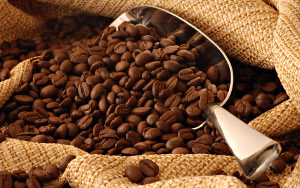 etnam are fully grown and of similar size to recent years after rains boosted crop development, according to producers in the biggest supplier of robusta beans used by Nestle SA.
etnam are fully grown and of similar size to recent years after rains boosted crop development, according to producers in the biggest supplier of robusta beans used by Nestle SA.Farmers have applied two rounds of fertiliser and are preparing for a final round in two to three weeks before harvesting starts in October, they said. Production may drop 3 per cent to 1.65 million metric tons in 2014-2015 from a record a year earlier, according to a Bloomberg survey this month.
The start of the harvest may pressure futures in London which have climbed 17 per cent this year on speculation that consumption will outstrip supply. The robusta shortfall will be 1.6 million bags, or 96,000 tons, in 2014-2015, according to Volcafe Ltd. Total coffee demand will exceed output by as much as 10 million bags, the International Coffee Organisation said this month, based on research by others.
“Cherries have basically reached their full size after heavy rains,” said Vu Dinh Noi, head of a production team at state-owned Thang Loi Coffee Co., the biggest grower. “The key now is applying fertilizer and preventing disease.” A mix of rainy and sunny days would help, he said by phone on 13 Aug.
Futures traded at $1,962 a ton on NYSE Liffe on Aug. 15. Prices advanced 4.4 percent in July, rising for a second straight month, after an 11-per-cent slump in May. Arabica, the variety favored by Starbucks Corp., has jumped 74 per cent to $1.9315 a pound this year.
‘Heavy Showers’
“The cherry size is now similar to the average over the past five years,” said Cao Van Tu, chairman of Dak Lak-based Ea Pok Coffee Co. “While heavy showers did cause cherries to fall off on our plantation, our agronomists addressed the issue so the amount affected was not that much,” he said by phone.
The last record crop probably stressed trees and may reduce yields, and heavy rains last month spurred diseases in some regions and resulted in loss of cherries, Phan Hung Anh, deputy director of Dak Lak-based Anh Minh Co., the largest private exporter by volume, said by phone this month.
Rainfall recorded in Dak Lak averaged 400.4 millimeters in July at 10 stations, including one in neighboring Dak Nong province, said the Meteorology and Hydrology Department in the province, which represents about 30 per cent of the harvest. That’s more than double 192.5 millimeters a year earlier.
Precipitation in the province averaged 86.7 millimeters in the first 10 days of August, less than 100.9 millimeters a year ago. Rainfall for 11 Aug. to 20 Aug. is forecast to be similar or lower than the average in previous years, with most regions receiving 30 to 50 millimeters, the weather office said 12 Aug.
“The intensity and frequency of rains has subsided in the last one week,” Tong Teik Pte, a company owned by RCMA Commodities Asia Pte, wrote in an 13 Aug. report. “Good sunshine and overcast skies present favorable weather for the development of cherries.”





